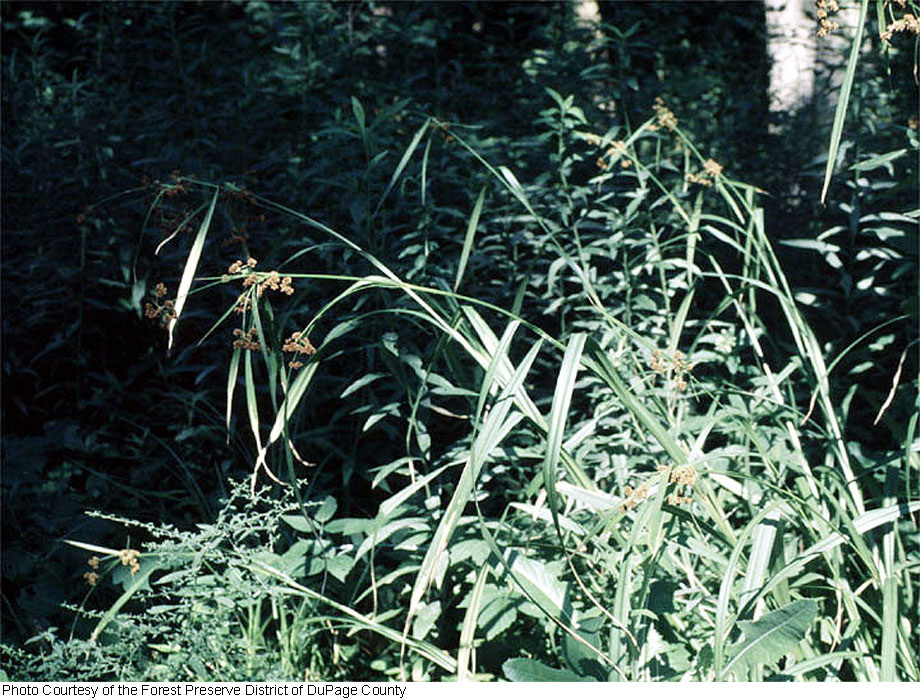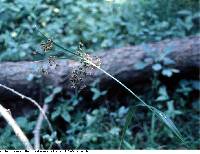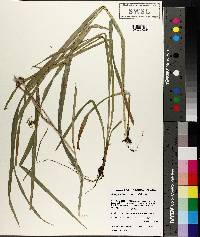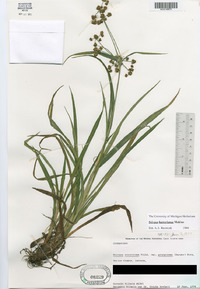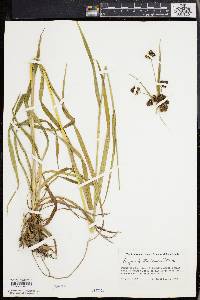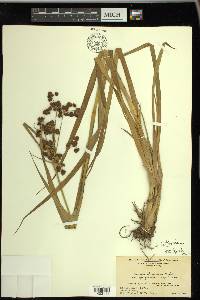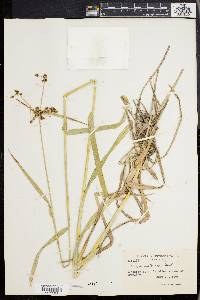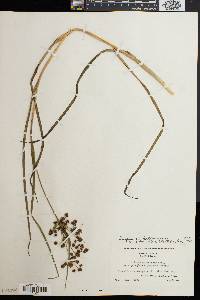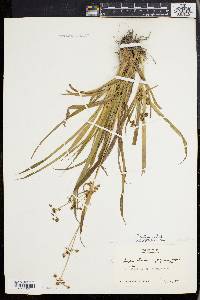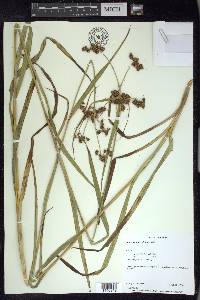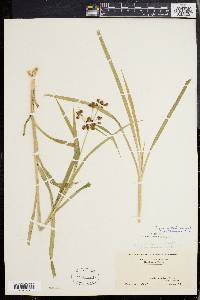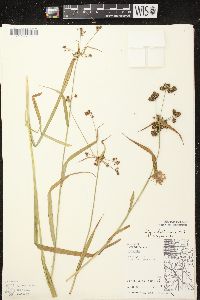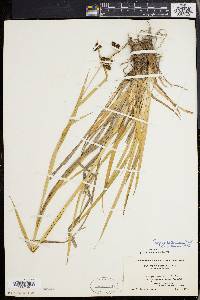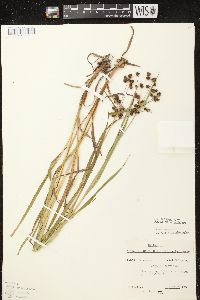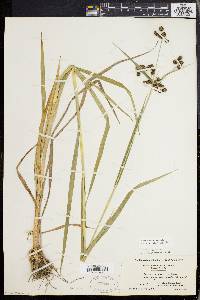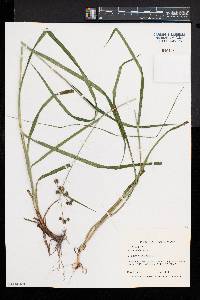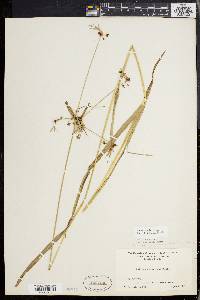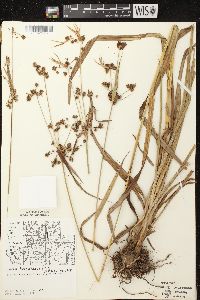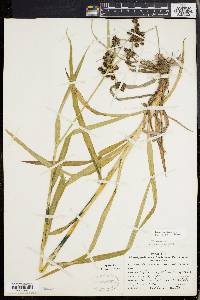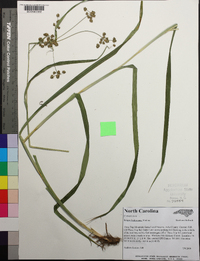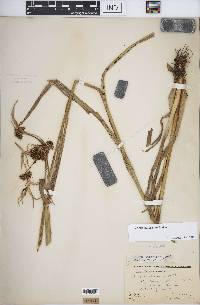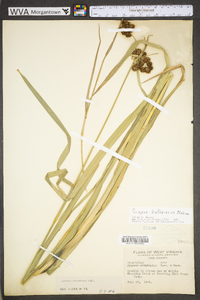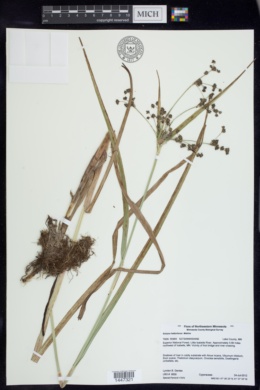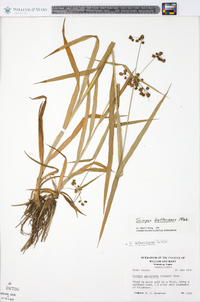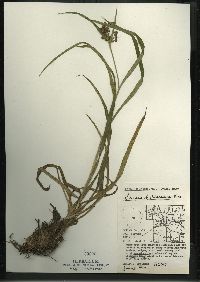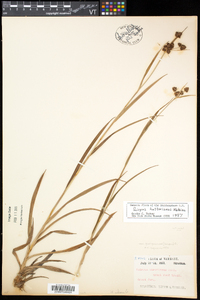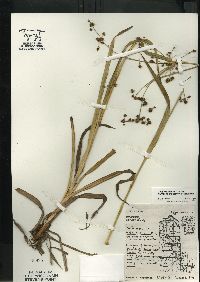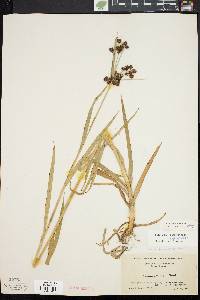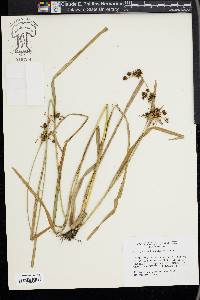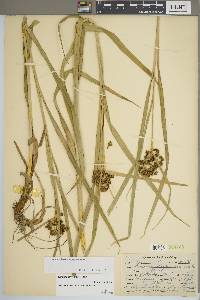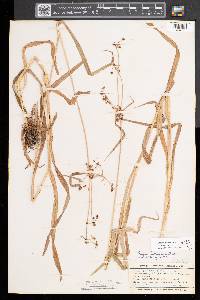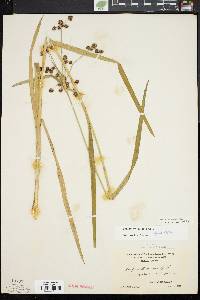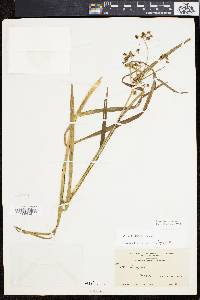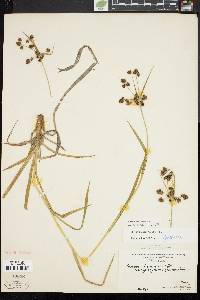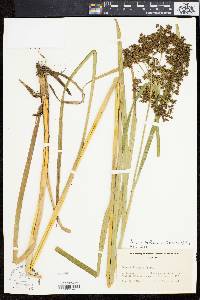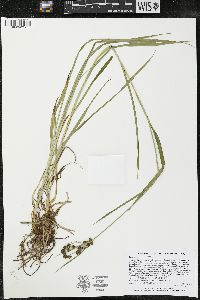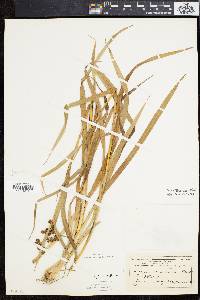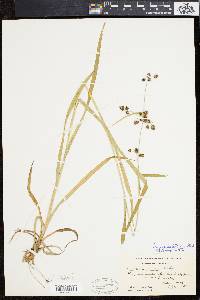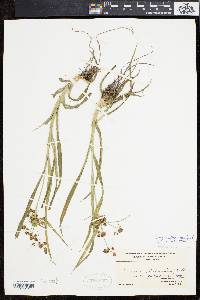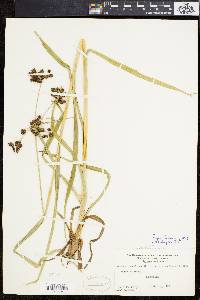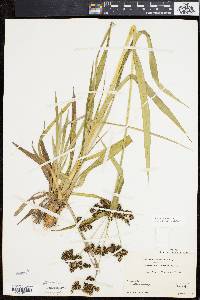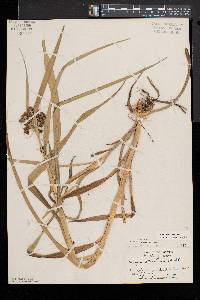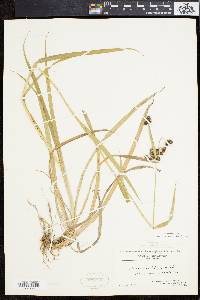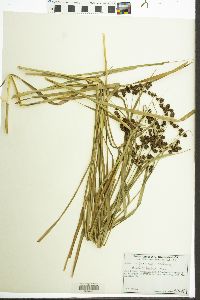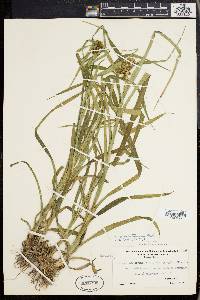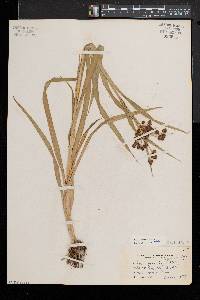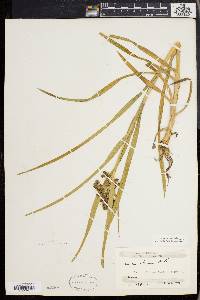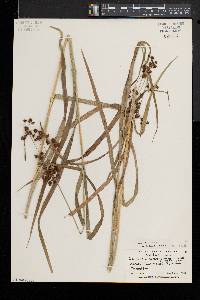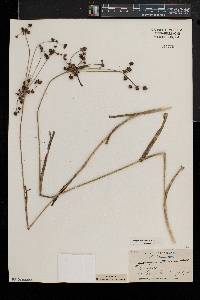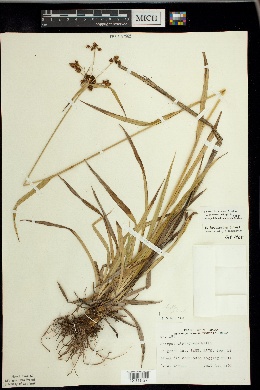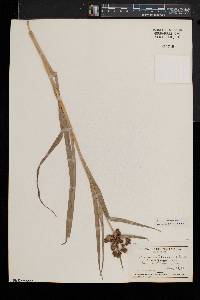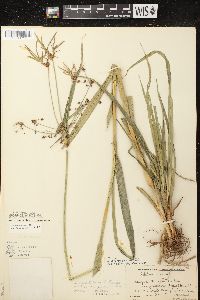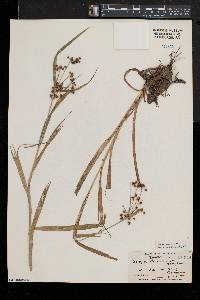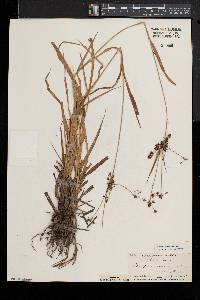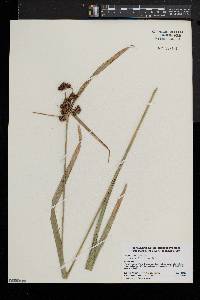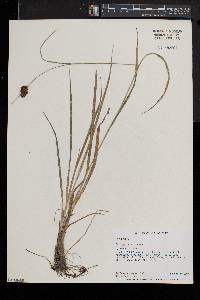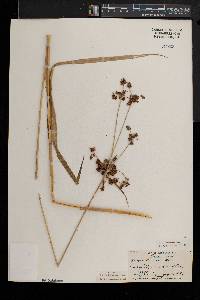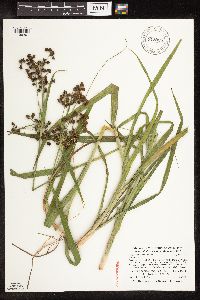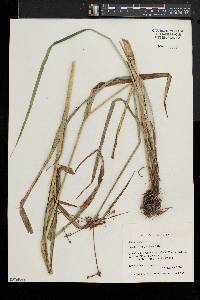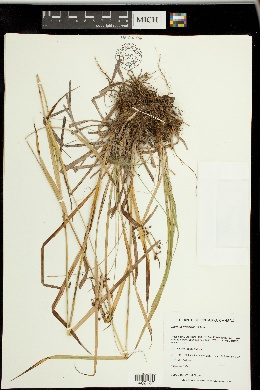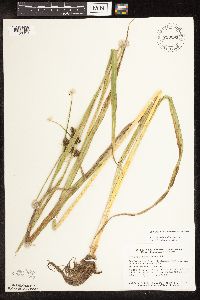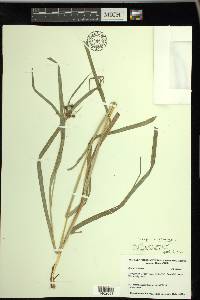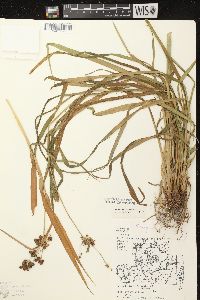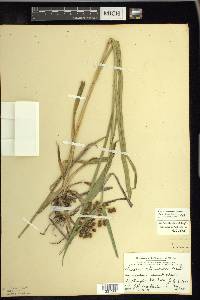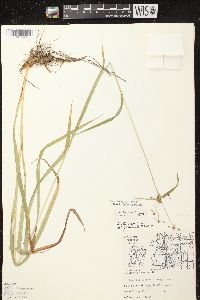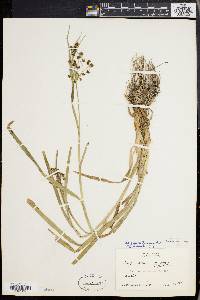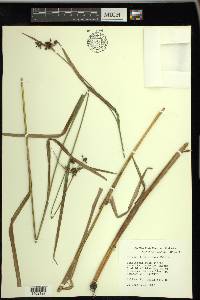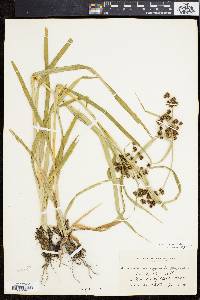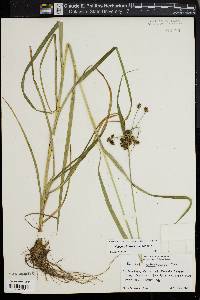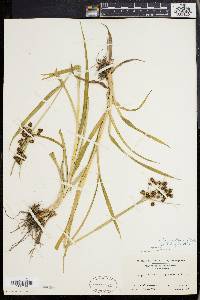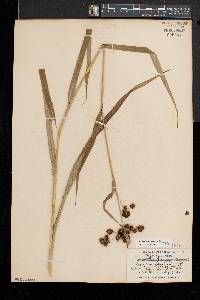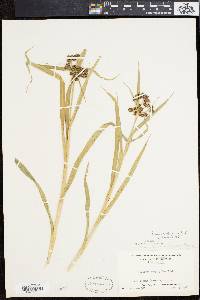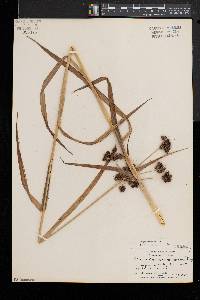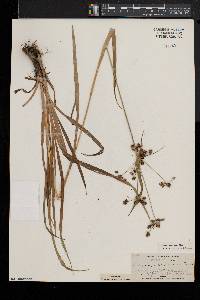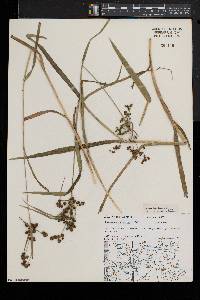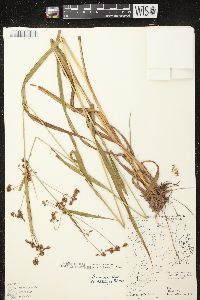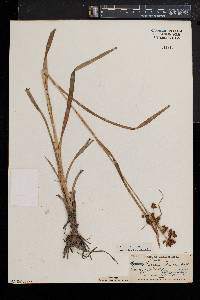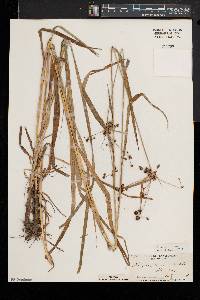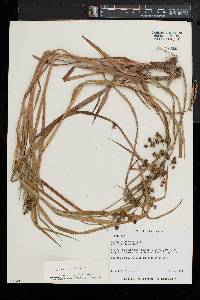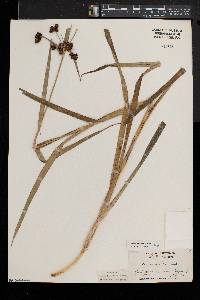Scirpus hattorianus
|
|
|
|
Family: Cyperaceae
Mosquito Bulrush
|
Plants cespitose; rhizomes short, tough, fibrous. Culms: fertile ones upright or nearly so; nodes without axillary bulblets. Leaves 3-9 per culm; sheaths of proximal leaves light brown; proximal sheaths and blades with septa few to many, rather inconspicuous; blades 20-35 cm × 5-9 mm. Inflorescences terminal; rays ascending or divaricate (usually both in the same inflorescence), rays often bearing axillary bulblets, proximal branches smooth, distal branches scabrellous to scabrous; bases of involucral bracts green, margins usually speckled with red-brown, rarely solid black, not glutinous. Spikelets in dense clusters of 4-55 (largest cluster with 15 or more), spikelets sessile, ovoid or broadly ovoid, 2-3.5 × 1.3-2.5 mm; scales blackish or occasionally brownish with pale midribs, elliptic or broadly elliptic, 1-1.4(-2) mm, apex mucronate, mucro 0.1-0.2 mm. Flowers: perianth bristles persistent, (4-)5-6, slender, straight or curved, shorter than to equaling achene, with retrorse, thin-walled, round-tipped barbs in distal (0.1-)0.2-0.4, enclosed within scales; styles 3-fid. Achenes pale brown, elliptic or obovate in outline, plumply trigonous, (0.6-)0.7-1.1 × 0.3-0.5 mm. 2n = 56. Fruiting late spring-early summer (Jun-early Jul). Moist meadows, marshes, and ditches; 0-800 m; St. Pierre and Miquelon, N.B., Nfld. and Labr., N.S., Ont., Que.; Conn., Ill., Ind., Maine, Md., Mass., Mich., Minn., N.H., N.J., N.Y., N.C., Ohio, Pa., R.I., Vt., Va., W.Va., Wis.; Asia (Japan, probably introduced from North America). Scirpus hattorianus has been confused in the past with both S. atrovirens and S. georgianus. Scirpus hattorianus tends to be a more slender plant, and the scales of its spikelets are usually black, not brown. The perianth bristles are superficially intermediate between the other two. They are typically shorter and more delicate than those of S. atrovirens. In S. hattorianus the longest bristles are usually only 0.6-0.8 times as long as the achene, and barbed in the distal (0.1-)0.2-0.4; in S. atrovirens the longest bristles are usually 0.9-1.2 times as long as the achene and barbed in the distal 0.3-0.6. Some individuals fall outside these ranges and identification must be based on comparison of all the characters mentioned in the key. Separation from S. georgianus is discussed under S. georgianus. Scirpus hattorianus occasionally hybridizes with S. ancistrochaetus, S. atrocinctus, S. atrovirens, S. georgianus, and S. pedicellatus. The name Scirpus peckii Britton has been applied to hybrids between S. hattorianus and S. atrocinctus or S. pedicellatus.
Perennial herb with short, tough rhizomes, tufted to 1.5 m tall Leaves: three-ranked, three to nine per culm. Sheaths of lower leaves light brown. Blades 20 - 35 cm long, 5 - 9 mm wide, keeled beneath. Inflorescence: a large, head-like arrangement of spikelets, terminal, one- or two-times branched with ascending or diverging stalks (which often bear axillary bulblets), subtended by three leaf-like bracts. Bracts green basally, often speckled reddish brown along the margins. Flowers: minute, subtended by a floral scale, lacking sepals and petals, bearing four to six persistent bristles. Bristles slender, curved or straight, shorter than or equal to achene, bearing small barbs near the apex, enclosed inside the scales. Stamens one to three, exserted. Pistil one. Style linear, three-cleft, base persistent. Fruit: a one-seeded achene, light brown, about 1 mm long and 0.5 mm wide, elliptic or reverse egg-shaped, plumply three-sided, minutely bumpy. Culm: to 1.5 m long, three-sided, solid. Spikelets: in dense clusters of four to fifty-five, stalkless, 2 - 3.5 mm long, 1 - 2.5 mm wide, egg-shaped to widely egg-shaped. Floral scales spirally arranged, usually blackish or sometimes brown with a pale midrib, 1 - 2 mm long, elliptic to widely elliptic with a rounded apex that bears a tiny point. Similar species: No information at this time. Flowering: June to August Habitat and ecology: Rare in the Chicago Region. It has been found along trails, streams, and marshes. Occurence in the Chicago region: native Etymology: Scirpus comes from the Latin name for a bulrush. Author: The Morton Arboretum From Flora of Indiana (1940) by Charles C. Deam Indiana Coefficient of Conservatism: C = 3 Wetland Indicator Status: OBL |

